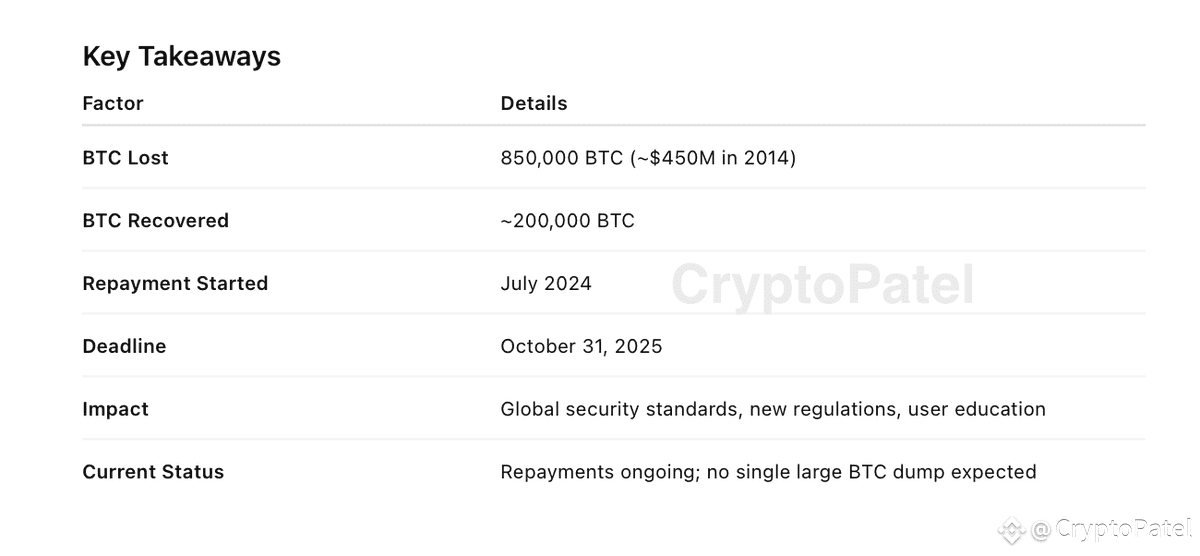The Mt. Gox hack of 2014 remains one of the most devastating events in cryptocurrency history. Once handling over 70% of all global Bitcoin transactions, Mt. Gox’s collapse shook investor confidence and exposed deep flaws in crypto exchange security.
More than a decade later, the consequences of this breach continue to shape the industry from regulatory frameworks to how exchanges store digital assets.
What Was Mt. Gox?
Mt. Gox, short for “Magic: The Gathering Online eXchange,” was launched in 2010 and quickly became the largest Bitcoin exchange globally. By 2013, it processed more than 70% of the world’s BTC volume.
However, behind the scenes, Mt. Gox was plagued by poor security practices, lack of internal audits, and careless management- a combination that proved fatal.
Timeline of the Mt. Gox Hack and Collapse
1. Early Breach in 2011
The first security vulnerabilities were exploited in June 2011. Hackers accessed Mt. Gox's hot wallets due to unencrypted private keys and began siphoning funds.
2. Ongoing Theft Until 2014
Over the next two years, attackers continued draining funds undetected. By February 2014, Mt. Gox had lost 850,000 BTC, worth over $450 million at the time.
3. Shutdown and Bankruptcy
In February 2014, Mt. Gox abruptly halted withdrawals. Days later, it filed for bankruptcy protection in Tokyo. Shockwaves rippled through the crypto world, leading to massive sell-offs and distrust.
Why Did the Mt. Gox Hack Happen?
An investigation revealed several critical failures:
Unencrypted wallets allowed direct access to funds
Lack of internal accounting meant missing coins weren’t detected for years
No version control or audit logs to trace discrepancies
Cold storage was poorly managed or unused
These lapses made Mt. Gox a prime target for hackers and led to a prolonged, large-scale drain of user assets.
Civil Rehabilitation: Is Mt. Gox Paying Users Back?
Yes. After years of legal proceedings, Mt. Gox shifted from bankruptcy to civil rehabilitation — allowing for repayments to users.
Key Updates:
Rehabilitation plan approved: November 2021 (Tokyo District Court)
Repayments began: July 2024
Assets recovered: ~200,000 BTC and BCH, plus ¥69 billion JPY
Final deadline for repayments: October 31, 2025
Wallet movements: Over 11,500 BTC ($900M+) moved for processing as of March 2025
Creditors must complete KYC, payment method selection, and claim registration to receive funds.
Impact on the Crypto Industry
1. Security Overhauls
The Mt. Gox collapse triggered a global shift in how exchanges operate. Key reforms include:
Cold wallet storage for most user funds
Multi-signature wallets
Independent security audits
Bug bounty programs and better version control
2. Regulatory Reforms
Japan led the charge with new exchange licensing, followed by global efforts to regulate digital asset platforms. Today, most countries enforce KYC/AML laws for exchanges — a direct result of Mt. Gox.
3. Market Awareness and User Caution
Users became more cautious, preferring self-custody solutions like hardware wallets. The idea of “not your keys, not your coins” became a core principle in crypto.
Where Things Stand in 2025
As of August 2025:
Over 70% of Mt. Gox creditors have received repayments
~35,000–45,000 BTC still remain in Mt. Gox wallets
Final claims must be submitted by October 31, 2025
Despite market concerns, most analysts believe the staggered repayments will reduce major sell pressure.
Key Takeaways

Provide a caption (optional)
Final Thoughts
The Mt. Gox hack didn’t just take millions in Bitcoin- it forced the crypto industry to evolve. From security practices to investor awareness and legal protection, Mt. Gox was the wake-up call crypto needed.
Even in 2025, the ripples of this event are still felt. And as repayments continue, Mt. Gox reminds us why trust, security, and regulation are essential pillars of a healthy crypto ecosystem.